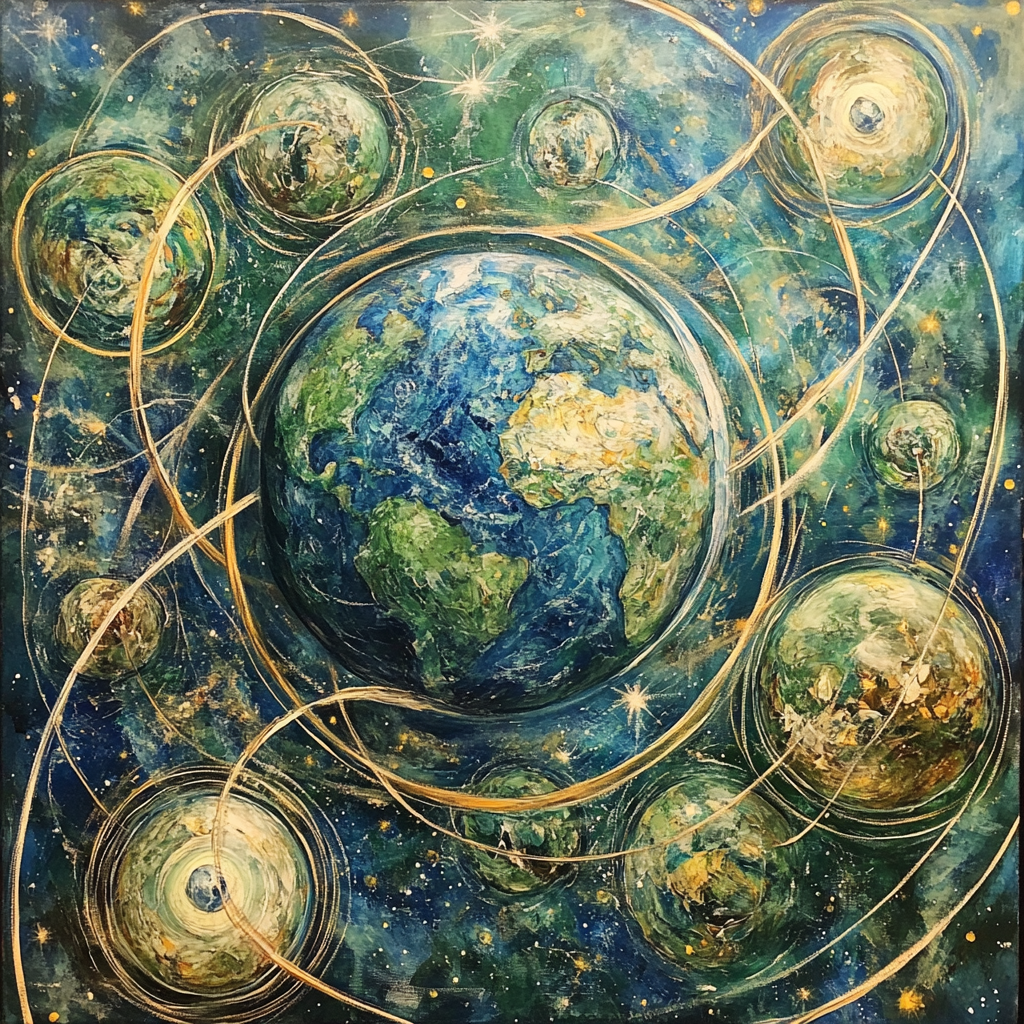How do we govern a nation when its citizens live in entirely different existential frameworks? This post explores Spiral Dynamics as a lens for understanding political polarization, authoritarian regression, and the psychological roots of our cultural divides. By mapping the values behind each stage of human development—from survival to global consciousness—we uncover why common ground is so elusive, and how pluralistic societies can protect themselves from fear-based manipulation.
I like to think of spiral dynamics as a developmental model that explains the tendencies and rationale behind an individual’s existential operating system. It is the energy behind our purpose, values, and priorities. Each stage contains an understanding and integration of the previous stages. It is also my belief that stress can cause regression towards prioritizing the values of the previous existential stages. for example we are willing to sacrifice our environmentalist purpose for the survival of our offspring.
Spiral Dynamics and the Challenge of Governing a Pluralistic Society
Spiral Dynamics is a model of human development that tracks how our values evolve in response to changing life conditions. It shows how our ways of thinking and relating adapt as we move through different stages of psychological and cultural complexity. Each stage represents a distinct worldview—a way of answering the questions: What does it mean to live well in this world? What is the purpose of my living?
The theory, developed by Clare Graves and later expanded by Don Beck and Christopher Cowan, describes these stages as “value memes” (vMEMEs). These aren’t fixed identities, but recurring patterns that can show up individually or collectively, often layered and in tension. All of these stages exist simultaneously in pluralistic societies, making collective governance a psychologically complex endeavor.
Stages of Consciousness in Spiral Dynamics
Each stage reflects a way of making meaning and navigating power:
- Beige – Survival
Priorities: Physical safety, immediate needs.
Political lens: Basic aid, crisis response.
Political voice: Often silent or marginalized. - Purple – Tribalism
Priorities: Belonging, protection, shared myth.
Political lens: In-group loyalty, tradition.
Political voice: Familial networks, local customs, spiritual heritage. - Red – Power and Ego
Priorities: Strength, dominance, control.
Political lens: Charisma, fear, nationalism.
Political voice: Authoritarian figures, populist movements. - Blue – Order and Morality
Priorities: Duty, structure, rules, purpose.
Political lens: Law and order, faith-based values.
Political voice: Religious institutions, bureaucratic conservatism. - Orange – Rational Achievement
Priorities: Autonomy, innovation, success.
Political lens: Market logic, competition, meritocracy.
Political voice: Business leaders, centrist policymakers. - Green – Relational Pluralism
Priorities: Equality, empathy, inclusion.
Political lens: Social justice, environmentalism.
Political voice: Progressives, activists, community organizers. - Yellow – Systemic Integration
Priorities: Flexibility, nuance, long-term thinking.
Political lens: Coordination across differences.
Political voice: Systems thinkers, bridge-builders. - Turquoise – Holistic Unity
Priorities: Interbeing, planetary care, consciousness.
Political lens: Global interdependence, inner-outer harmony.
Political voice: Philosophers, mystics, and cultural visionaries.
Why It’s So Hard to Govern Across the Spiral
We don’t live in a single value system—we live in a swirl of competing worldviews. While one group may be trying to optimize the economy, another may fight for survival, and another may be organizing for climate justice, these aren’t just ideological differences—they’re expressions of different developmental logics.
This makes governance difficult. For instance, a leader aligned with Red will likely struggle to understand or prioritize Green. Where Green sees empathy and collaboration as strengths, Red sees them as weaknesses. Green wants to redistribute power, while Red wants to concentrate it. Their worldviews aren’t just different—they’re structured in opposition.
Even when Green gains cultural traction, Red can frame it as naive, chaotic, or unpatriotic. Orange may adopt Green’s language but strip it of emotional depth, while Blue clings to fixed rules and traditions as a defense against change.
This isn’t just gridlock. It’s a conflict of internal maps—each protecting what it sees as vital.
How Red Uses Fear to Regress the Spiral
Red leadership often doesn’t rise—it pulls. It uses fear to disorient and destabilize, nudging people back down the spiral where they are easier to control.
- When Green feels overwhelmed, it can collapse into Blue moralism or Purple loyalty.
- When Blue feels ineffective, it may seek protection in Red power.
- When Purple and Beige feel unsafe, survival instincts take over.
Red knows this. It doesn’t need to persuade people through reason. It simply needs to activate the nervous system:
- Create enemies. Simplify complex problems into binary threats.
- Undermine public trust. Cast doubt on expertise, journalism, and science.
- Present that strength is the only antidote to chaos.
The result is regression, not in intellect, but in worldview. In a state of fear, people seek protection, not participation. This makes manipulation easier and democracy more fragile.
What Is a Pluralistic Society?
Pluralism means making room for difference, not just cultural, but psychological. A pluralistic society contains many worldviews operating side-by-side, sometimes in harmony, often in tension. It’s not about agreement—it’s about shared space.
This requires something rare: encountering other value systems without collapsing into fear, shame, or superiority. That’s a developmental capacity, not just a civic one.
How to Protect Pluralistic Societies from Regression
- Educate Toward Development, Not Just Information
Teach people how to think and feel—how to recognize patterns, hold tension, and stay with complexity. - Anchor Discourse in Shared Reality
Invest in journalism, science, and storytelling that maintains the integrity of language and evidence. - Build Social Resilience Locally
Foster trust at the ground level: through relationships, health care, and community support—not just policy. - Support Leaders Who Can Translate Across Levels
Choose leaders who recognize developmental diversity and can speak to different stages without pandering or polarizing. - Respond to Fear with Meaning
Fear collapses thought. Meaning expands it. Help people locate themselves in a story that is both grounded and generous.
Pluralism isn’t weak because of its diversity. It becomes weak when it fails to develop the psychological scaffolding to hold it.
